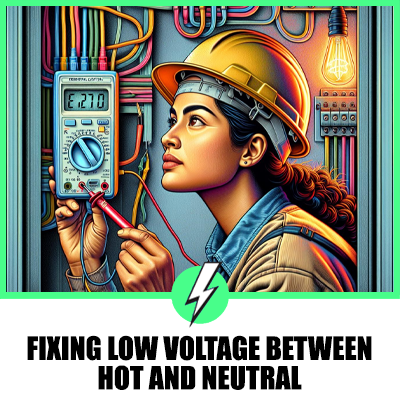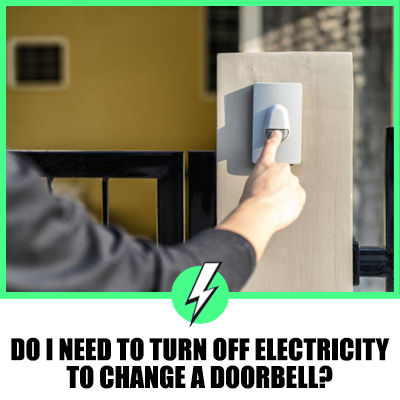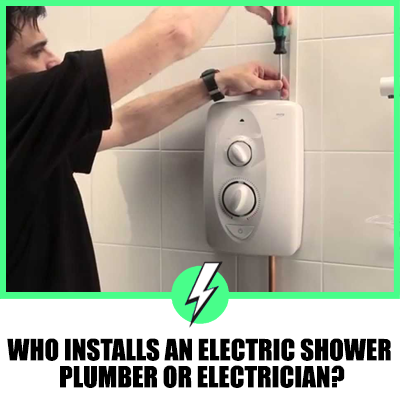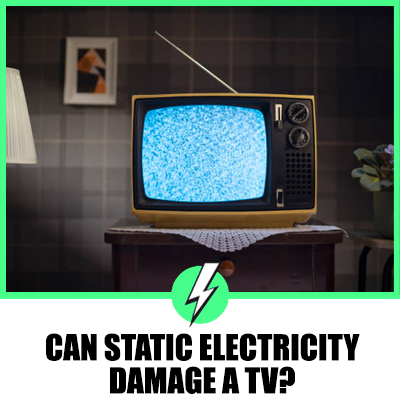Fixing Low Voltage Between Hot and Neutral
Ever wondered why your lights are dimming or your appliances aren’t running as they should?
Low voltage between hot and neutral in your electrical system could be the culprit. This issue might seem minor, but it’s often a red flag for deeper electrical problems that need your attention.
Well, we’ll be going over:
- What are the common symptoms of low voltage between hot and neutral?
- Why does low voltage occur, and what are the underlying causes?
- How can you test for and address low voltage issues effectively?
Let’s dive in!

Contents
Common Symptoms of Low Voltage between Hot and Neutral
When you’re facing low voltage in your electrical system, certain symptoms might start appearing, signaling that it’s time to address the issue.
Noticing these early warnings can prevent more significant problems down the line.
Firstly, dimming or flickering lights are one of the most noticeable signs. If your lights aren’t shining as brightly as they used to or flicker without a dimmer switch in use, this could indicate low voltage problems.
Secondly, appliances running slower than usual could also be a symptom. Electrical appliances depend on a stable voltage supply, and when this drops, their performance might decline.
Additionally, you might experience frequent tripping of circuit breakers. This safety mechanism is designed to protect your home, and frequent tripping could signal that your electrical system is under stress.
Finally, an unusual buzzing sound from outlets or switches might be heard. This is not normal and should be taken as a clear signal that your electrical system needs attention.
Paying attention to these symptoms and acting promptly can help ensure your electrical system remains safe and efficient.
Reasons Behind Low Voltage Issues
When you’re experiencing low voltage between hot and neutral, identifying the root causes is crucial. Several factors can lead to these issues, disrupting your electrical system’s efficiency.
Firstly, overloaded circuits are a common culprit. In homes or businesses where the demand on the electrical system exceeds its capacity, voltage drops are inevitable.
This scenario occurs when multiple high-powered appliances operate simultaneously on the same circuit. Hence, understanding the capacity of your electrical system and managing the load can prevent voltage issues.
Secondly, aged wiring significantly contributes to low voltage problems. Over time, wires can deteriorate, become loose, or get damaged, resulting in poor conductivity and voltage drops.
Regular inspections can highlight these problems before they escalate.
Lastly, faulty or outdated equipment, such as transformers and circuit breakers, can also cause low voltage between hot and neutral.
These components are vital for regulating voltage, and if they’re not functioning correctly, the entire system can suffer.
By pinpointing the origins of your low voltage issues, you’re better positioned to address them effectively.
Testing and Troubleshooting Techniques
When you encounter low voltage between hot and neutral, it’s paramount to approach the issue with systematic testing and troubleshooting techniques.
Safety first; ensure all work is conducted with the power off to avoid electric shock.
Start by inspecting your circuit breaker or fuse box. A tripped circuit breaker or a blown fuse might be the culprit. If you find any, reset or replace them and check the voltage again.
Next, use a multimeter to measure the voltage directly at the source, and then at various points along the circuit. This step helps pinpoint where the drop occurs.
If the voltage is low right from the source, the issue might be with your external supply or main panel.
Look for signs of wear and tear on wires and connections. Loose, corroded, or damaged wires can cause significant voltage drops.
Tighten any loose connections and replace damaged wires if necessary.
Remember, complex issues may require professional intervention. Don’t hesitate to call a licensed electrician if you’re unsure about any step.
Steps to Address Low Voltage Concerns
When you’re facing low voltage issues in your home, the key is to approach the problem methodically. The very first step is to ensure that all safety guidelines are followed strictly.
After you’ve checked the circuit breaker or fuse box and have a multimeter handy, it’s time to dive deeper into troubleshooting.
- Inspect Wiring and Connections: Carefully examine wires for signs of wear and tear. Old and damaged wires are often culprits for low voltage problems. If you notice frayed or exposed wiring, it needs replacement.
- Measure Voltage: Using your multimeter, measure the voltage at various points along the circuit, start from the outlet and work your way back to the breaker. This helps pinpoint exactly where the drop in voltage occurs.
- Tighten Loose Connections: Sometimes the issue could be as simple as loose connections. Check outlets, switches, and junction boxes for any loose wires and tighten them securely.
Remember, working with electricity is dangerous. If you’re not comfortable or knowledgeable, it’s better to seek assistance from a licensed electrician.
They can provide a more in-depth analysis and carry out repairs safely.
Importance of Addressing Low Voltage Problems
When you encounter low voltage between hot and neutral wires, it’s crucial not to ignore this issue. Low voltage can signify deeper, potentially hazardous problems within your electrical system.
It can lead to devices operating inefficiently or not working at all, increasing the risk of damage to sensitive electronics. More importantly, unresolved electrical issues can pose a serious fire risk over time.
By promptly addressing low voltage problems, you’re not only ensuring the longevity and efficiency of your household appliances but also safeguarding your home against electrical fires.
Remember, electricity doesn’t forgive, and the consequences of neglect can be far-reaching. Regular checks and maintenance can help you avoid costly repairs or replacements down the line.
Conclusion
Tackling low voltage issues head-on ensures the longevity of your appliances and safeguards your home against potential electrical hazards.
By prioritising regular maintenance and prompt action when discrepancies arise you’re not just saving on future costs but also ensuring a safer environment for you and your loved ones.
Don’t let minor problems escalate into major concerns. Stay vigilant and proactive in maintaining your home’s electrical health.





